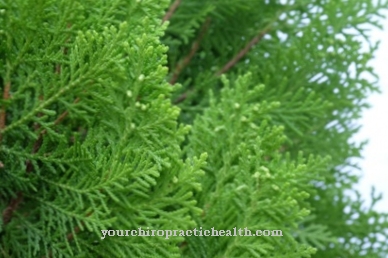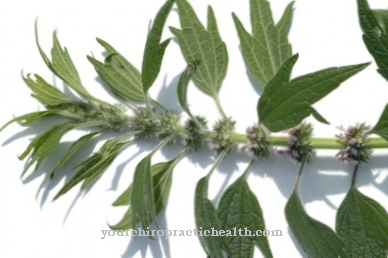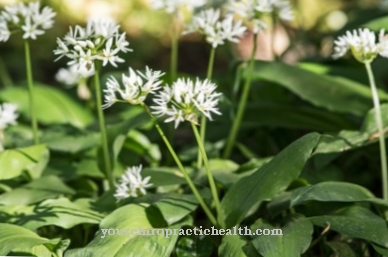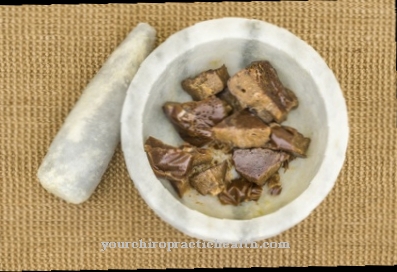tarragon, botanical name Artemisia Dracunculus, is a herb of the sunflower family. The perennial plant originally comes from the Orient. It grows wild in southern Europe, but is grown for agriculture. The herb is valued not only by cooks, but also by herbalists.
Occurrence & cultivation of tarragon

It was very likely the Crusaders who did the tarragon brought from Asia to Europe, because the word tarragon comes from the Arabic language. It quickly became a valued herb in the monastery gardens. The plant owes other names such as dragon and snake herb to a widespread superstition that tarragon keeps dragons away and helps with snakebites. In China it was mentioned as a spice between 2000 and 1000 BC.
Even today, tarragon is native to Asia, as well as to northwest America, Russia and southern Europe, where it is mainly grown in France and Italy. Wormwood and mugwort are distant relatives of tarragon. All belong to the genus Artemisia. The perennial plant grows up to two meters high and prefers sunny locations with a soil rich in nutrients, but not too moist. When the herbs bloom, the small yellow flowers form panicles.
The plant is easy to multiply by dividing the rhizome and grows relatively quickly. It not only grows in the garden, but can also be easily grown in the flower pot. Two types are known, the so-called real French tarragon and the Russian, also called Siberian tarragon. The French variant has a finer aroma, while its Russian relative tastes a bit bitter and is therefore rarely used.
Effect & application
Tarragon is known and loved as a spice in the kitchen. The cuisine of Italy and France in particular like to use it generously. The young leaves and shoots in particular are used for seasoning. In addition to chervil, dill and parsley, tarragon can always be found in classic herb mixtures. The essential oils that make up the unmistakable taste of the herbs are at their highest shortly before flowering.
This is the right time to harvest the approximately 30 centimeter long shoots (May to October). Tarragon can be used in many ways in the kitchen. It is used to flavor cucumbers, vinegar, mustard, sauces, marinades, salads, quark, soups and herb butter. Tender fish and poultry dishes are also enriched with the aromatic herb, as are mushrooms, mussels and lamb. Even liqueur can be made from the herbs. The real French
Tarragon tastes spicy and fresh and has a slightly sweet taste. In contrast to Russian, which tastes a bit bitter and slightly oily. This has to do with the essential oils, of which the French has a lot more to offer. These include estragole, ocimes, camphor, limes, myrcene and phellandrene. Other ingredients are flavones, tannins and bitter substances, coumarins and glycosides, as well as plenty of vitamin C and some minerals such as sodium, calcium, magnesium, iron and potassium.
Traces of delorazepam were also found. This chemical compound from the group of benzodiazepines is known for its calming effect. However, as a medicinal substance, the minute amount is meaningless. Only estragole has temporarily fallen into disrepute. The essential oil, which is also contained in fennel, anise and basil, has shown carcinogenic and mutagenic effects in animal experiments. The Federal Institute for Consumer Health Protection therefore recommends its sole use as a kitchen spice.
However, several medical studies contradict this assessment, which even classify a multiple of normal consumption as harmless. The Federal Institute therefore also admits that a specific health risk could not be proven and the recommendation is to be understood as a pure precautionary measure, which refers in particular to fennel tea, which is given to children when they have flatulence.
Importance for health, treatment & prevention
Thanks to its numerous ingredients, tarragon is valued not only in the kitchen, but also in naturopathy. The field of application of tarragon is quite extensive. Already in the Middle Ages, naturopaths made use of the substances and used them against the plague. Due to its relatively high vitamin C content, tarragon was used for scurvy. In ancient Rome, soldiers drank a brew against exhaustion. And chewing tarragon roots helped with toothache.
In India there was a special power drink made from tarragon and fennel. Today the essential oils for strengthening the digestive organs are particularly valued. Bitter substances stimulate the formation of gastric juices and help digest rich foods. At the same time, they are appetizing and relieve gas. There is evidence that chewing fresh leaves will help dispel the hiccups. When drunk as a tea, tarragon promotes kidney function. It is even said to have a worm-driving effect.
The stimulating effect on the metabolism makes the plant a popular remedy for rheumatic diseases and gout. Gynecology also benefits from the phytosterols in tarragon. They have a regulating effect on the menstrual cycle and can trigger delayed menstrual bleeding. Pregnant women should therefore be careful, at least at the beginning, as the herbs promote menstruation and can trigger a miscarriage.
Herbs serve well during menopause. Your phytohormones reduce symptoms such as hot flashes, depressive moods, irritability and headaches. The vitamin C makes the plant an effective remedy for colds, spring fatigue and coughs. A cup of tarragon tea in the evening will calm you down and help you fall asleep.

























.jpg)


